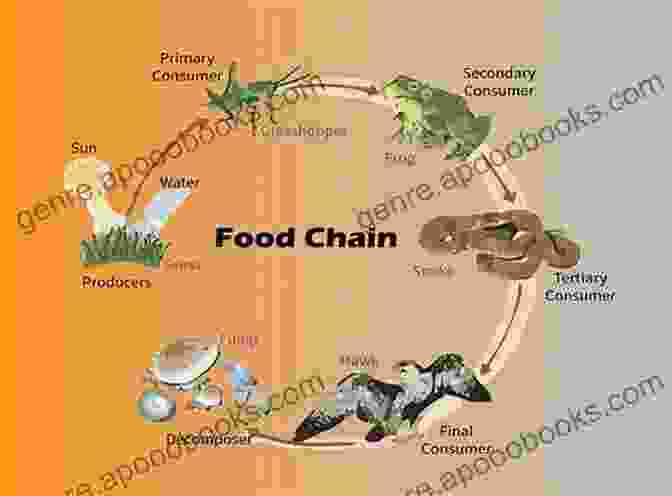The Ecology of Predation at the Microscale: Uncovering the Hidden World

:
In the grand tapestry of life, predation stands as a fundamental force, driving the evolution and shaping the ecosystems of our planet. While we may be familiar with the fierce interactions between lions and zebras, or sharks and seals, the world of predation extends far beyond the realm of visible life. At the microscopic scale, a hidden drama unfolds, where microorganisms engage in fierce battles for survival.
4.5 out of 5
| Language | : | English |
| File size | : | 7902 KB |
| Text-to-Speech | : | Enabled |
| Screen Reader | : | Supported |
| Enhanced typesetting | : | Enabled |
| Print length | : | 356 pages |
The Unseen World of Microorganisms:
The microbial world is a vast and diverse realm, teeming with an astonishing array of microorganisms, including bacteria, protists, fungi, and microalgae. These tiny organisms play crucial roles in the cycling of nutrients, decomposition of organic matter, and the very foundation of food webs. Among these microorganisms, some have evolved to become predators, preying upon other microorganisms for sustenance.

Predator-Prey Interactions at the Microscale:
The interactions between microbial predators and their prey are incredibly complex and diverse. Some predators, like the bacteria-eating Bdellovibrio bacteriovorus, are obligate predators, relying solely on other bacteria for food. Others, like the ciliated protozoa Tetrahymena, are opportunistic predators, consuming a wide range of microorganisms.
The prey species, too, have evolved a variety of defense mechanisms to avoid predation. Some bacteria, for instance, produce antibiotics or toxins to deter predators. Others form protective biofilms or develop physical barriers to make themselves less vulnerable.
Survival Strategies and Evolutionary Adaptations:
In the face of constant predation pressure, microorganisms have evolved remarkable survival strategies and adaptations. Many species have developed intricate camouflage techniques, blending in with their surroundings or mimicking non-prey organisms. Others have increased their mobility, allowing them to escape predators more effectively.
Predators, in turn, have countered these defensive measures by evolving specialized hunting behaviors and sensory adaptations. Some predators, like the amoeba Acanthamoeba castellanii, use pseudopods to engulf their prey, while others, like the bacterium Myxococcus xanthus, secrete enzymes that dissolve their prey's protective barriers.
Importance of Predation at the Microscale:
The ecological significance of predation at the microscale cannot be overstated. Predators regulate microbial populations, preventing certain species from becoming too abundant. This helps maintain the delicate balance of microbial communities and ensures the proper functioning of ecosystems. Moreover, predation drives evolutionary change, selecting for traits that enhance survival and resistance to predation.

Unveiling the Hidden Drama:
Despite its immense importance, the ecology of predation at the microscale remains largely unexplored. Scientists are only beginning to unravel the intricate relationships, survival strategies, and evolutionary adaptations that shape this hidden world. As we delve deeper into this realm, we gain a newfound appreciation for the complexity and wonder that exists at the smallest of scales.
:
'The Ecology of Predation at the Microscale' invites you on a captivating journey into this unseen world of predator-prey interactions. Through cutting-edge research and stunning visualizations, this book reveals the hidden drama unfolding beneath our very eyes. It is a testament to the incredible diversity and interconnectedness of life, from the smallest microorganisms to the largest animals. By understanding the ecology of predation at the microscale, we gain a deeper appreciation for the fundamental forces that shape our planet's ecosystems and the very fabric of life itself.
4.5 out of 5
| Language | : | English |
| File size | : | 7902 KB |
| Text-to-Speech | : | Enabled |
| Screen Reader | : | Supported |
| Enhanced typesetting | : | Enabled |
| Print length | : | 356 pages |
Do you want to contribute by writing guest posts on this blog?
Please contact us and send us a resume of previous articles that you have written.
 Book
Book Novel
Novel Page
Page Chapter
Chapter Text
Text Story
Story Genre
Genre Reader
Reader Library
Library Paperback
Paperback E-book
E-book Magazine
Magazine Newspaper
Newspaper Paragraph
Paragraph Sentence
Sentence Bookmark
Bookmark Shelf
Shelf Glossary
Glossary Bibliography
Bibliography Foreword
Foreword Preface
Preface Synopsis
Synopsis Annotation
Annotation Footnote
Footnote Manuscript
Manuscript Scroll
Scroll Codex
Codex Tome
Tome Bestseller
Bestseller Classics
Classics Library card
Library card Narrative
Narrative Biography
Biography Autobiography
Autobiography Memoir
Memoir Reference
Reference Encyclopedia
Encyclopedia Tim Crouch
Tim Crouch W B Bartlett
W B Bartlett Mary Sue Welsh
Mary Sue Welsh Meghan Davis
Meghan Davis Kimberly Kay Hoang
Kimberly Kay Hoang Stephanie Dossantos
Stephanie Dossantos Vera Pavlova
Vera Pavlova Thijs Pepping
Thijs Pepping Walter Russell Mead
Walter Russell Mead Malachy Mccourt
Malachy Mccourt Mande Matthews
Mande Matthews Themis Nikoloudis
Themis Nikoloudis Ladii Nesha
Ladii Nesha Regina Schaffer
Regina Schaffer Yvonne Woon
Yvonne Woon Nick Bradley
Nick Bradley Pamela Chanko
Pamela Chanko Samirah The Sapphic Siren
Samirah The Sapphic Siren Uwe Steinhoff
Uwe Steinhoff Max Frazier
Max Frazier
Light bulbAdvertise smarter! Our strategic ad space ensures maximum exposure. Reserve your spot today!

 Darren BlairMy Emotional Journey of Being Married to a Sociopath: A Story of Healing and...
Darren BlairMy Emotional Journey of Being Married to a Sociopath: A Story of Healing and... Barry BryantFollow ·9.3k
Barry BryantFollow ·9.3k Edgar HayesFollow ·15k
Edgar HayesFollow ·15k Howard BlairFollow ·4.6k
Howard BlairFollow ·4.6k Vernon BlairFollow ·17k
Vernon BlairFollow ·17k Don ColemanFollow ·9.5k
Don ColemanFollow ·9.5k Manuel ButlerFollow ·19.5k
Manuel ButlerFollow ·19.5k Duane KellyFollow ·6.8k
Duane KellyFollow ·6.8k Braeden HayesFollow ·14.7k
Braeden HayesFollow ·14.7k

 Finn Cox
Finn CoxCarmen Suite For Flute Quartet (G Alto Flute) ( Carmen...
Experience the Magic of...

 Andy Cole
Andy ColeUncover Hidden Truths: A Comprehensive Guide to Detecting...
: The Silent...

 Ken Simmons
Ken SimmonsUnleash Your Potential: Transform Frustration and...
Are you tired of feeling...

 Rick Nelson
Rick NelsonHard To Kill: A Gripping Thriller That Will Keep You on...
Tom Rollins is a...

 Ivan Turner
Ivan TurnerUnleash the Power of Your Breath: Discover Breath...
In the tapestry of life, where stress and...
4.5 out of 5
| Language | : | English |
| File size | : | 7902 KB |
| Text-to-Speech | : | Enabled |
| Screen Reader | : | Supported |
| Enhanced typesetting | : | Enabled |
| Print length | : | 356 pages |












